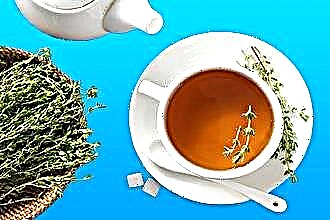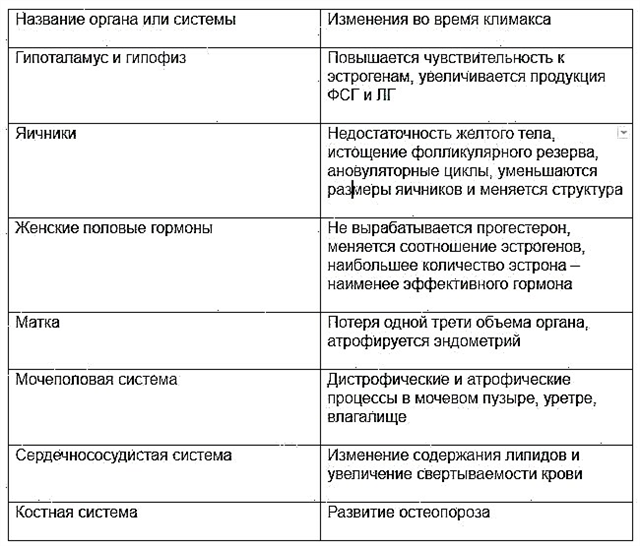Most patients in otolaryngology departments of hospitals are afraid of surgery to get rid of the disease. A puncture, despite its relative painlessness, is tried to be avoided until the very last moment, when medications no longer help. However, puncture is a good alternative. In 1976, the Yaroslavl doctor V.S. Kozlov developed a fundamentally new treatment of sinusitis with a yamic catheter, which was already patented in 26 countries. It is based on the removal of exudate from the sinus without damaging its walls and mucous membranes.
Sinus catheter device
The device is inserted deep into the nasal cavity, therefore, in order to avoid damage to the mucous membranes, it is made of soft latex. Its principle of operation is based on the difference in pressure that is created in the nasal cavity, which helps to avoid taking strong drugs and a puncture. This makes it possible to use it to treat children from the age of five.

The sinus catheter is constantly being improved, and today it has the following design:
- The body consists of a posterior balloon, which is inserted into the nasopharynx, a valve for inflation, and a connecting flexible metal rod.
- The cuff includes a front valve balloon and a working channel that terminates in a syringe adapter through which mucus is aspirated and drugs are administered.
The diameters of the channels of the device can be different, depending on who the patient is - an adult or a child.
In addition, Yamik has another significant advantage over a puncture, since it heals not only one affected air cavity, but all the affected sinuses at the same time, which reduces the manipulation time and saves the patient from unpleasant procedures.
Indications and contraindications for the use of the Yamik sinus catheter
 Like any other medical manipulation, washing with a Yamik catheter has its own characteristics. In this way, mild ENT diseases are usually treated, and the patient is also prepared for surgical interventions on the ENT organs and postoperative complications are removed (for example, they pump out blood from the nasopharynx after removing the adenoids from the child and inject special drugs directly to the affected area).
Like any other medical manipulation, washing with a Yamik catheter has its own characteristics. In this way, mild ENT diseases are usually treated, and the patient is also prepared for surgical interventions on the ENT organs and postoperative complications are removed (for example, they pump out blood from the nasopharynx after removing the adenoids from the child and inject special drugs directly to the affected area).
Sometimes, catheterization is also performed to inject a contrast agent into the sinus, followed by radiography or computed tomography.
The procedure is indicated for such ailments:
- sinusitis (acute, as well as chronic as part of complex treatment),
- tonsillitis (inflammation of the tonsils),
- rhinitis (runny nose),
- adenoiditis (overgrowth of the adenoids that blocks the throat)
- polyps,
- ethmoiditis (damage to ethmoid cells),
- sphenoiditis (inflammation of the wedge-shaped chambers);
- frontal sinusitis (inflammation of the frontal pockets),
- polysinusitis (inflammation in several different air chambers).
The list of contraindications is not very wide and includes:
- children under 5 years of age (other methods of treatment are provided for them);
- old age of the patient, suggesting a significant number of pathologies;
- curvature of the nasal septum (prevents the introduction of the device into the nasal cavity);
- polyposis, covering the entire nasal cavity (careless movement can lead to detachment of the polyp and disruption of tissue integrity);
- nose bleed;
- epilepsy;
- hemorrhagic vasculitis, a vascular disease leading to capillary bleeding.
Preparation for the procedure
 Yamik procedure for sinusitis is carried out in a hospital or clinic. Special preliminary preparations on the part of the patient are not required for it, it is enough just to clean the nose well before catheterization.
Yamik procedure for sinusitis is carried out in a hospital or clinic. Special preliminary preparations on the part of the patient are not required for it, it is enough just to clean the nose well before catheterization.
Further algorithm of actions:
- The patient takes a sitting position.
- Anesthesia is performed on one or both turbinates, depending on the site of the lesion, using novocaine or lidocaine in the form of a spray.
- Turundas saturated with adrenaline are introduced into the nasal passages to relieve swelling and expand the anastomoses.
- The metal rod is bent according to the individual anatomical features of a particular patient, the device is inserted into the nose along the lower part of the nasal canal, and air is pumped into the latex balloon.
Washing for children has its own nuances, since the child may be frightened and react negatively to the doctor's attempts to insert a catheter into the nose.
In order for the children not to worry and not interfere with the doctor before the manipulation, it is necessary to psychologically prepare them for washing, explaining the essence of subsequent actions and presenting the forthcoming action as a game. This can best be done by a specialist psychologist together with the parents.
In addition, the manipulation of the child is carried out by an experienced otolaryngologist who is well familiar with the structural features of the child's body, and knows what volumes of solutions with drugs should be administered for a child of every age, and how much to inflate the balloons so that there is no pain.
Washing with Yamik catheter

First, air is injected into the posterior balloon of the catheter, which overlaps the nasopharynx. In this case, some patients may experience unpleasant sensations that quickly pass. After the posterior balloon is ready, the anterior balloon is inflated, the nasal space is completely blocked on both sides. The patient's head tilts to the side opposite to where the device is inserted.
An empty syringe is connected to the adapter, by moving the piston of which an intermittent pressure arises in the cavity, due to which the anastomosis opens, and the contents of the accessory chambers flow into the nasal cavity, and then into the syringe. The manipulation is repeated until the exudate is withdrawn into the syringe.
The next step is the introduction of an antibiotic, often in combination with corticosteroids, or an antiseptic into the tract. To do this, the patient is offered to lie on his side, while it is desirable that his head hang down. You can do this while sitting, only the patient will have to strongly tilt his head towards the affected chamber. A syringe with a medicinal solution is attached to the working channel, poured into the nasal cavity and a vacuum is created again. Thus, the medicine flows by gravity into the sinus.
The procedure for ending the manipulation is as follows: first, the rear balloon is deflated, then the front one. After that, the entire structure is carefully removed from the nose.
The duration of the rinsing itself lasts about 8 minutes, and together with all preparations - about 12 minutes.
If there is bilateral sinusitis, then after a short period of time all actions are repeated with the second cavity.

The first catheterization procedure often does not lead to the discharge of purulent contents. At the same time, the connecting channels become less edematous and gradually open. In 2-3 hours after the end of the manipulation, the natural outflow of secretion begins. The repeated procedure the next day is already taking place as usual.
Depending on the severity of the course of the disease and swelling of the anastomosis, the number of washes can be from 2 to 6, on average 3-4 trips to the hospital are enough. Nasal breathing improves markedly after the second procedure, and complete recovery occurs in about a week.
The effectiveness of the Yamik procedure, its advantages and disadvantages
The greatest problem of inflammation of the maxillary accessory pockets of the nose is the removal of edema from the connecting canal to restore normal drainage of the sinuses and the removal of purulent exudate. After that, all the symptoms of the disease (headache, fever, nasal congestion and impaired nasal breathing) abruptly weaken.
Main results of Yamik treatment:
- reduction of swelling of the mucous membranes of the nose;
- restoration of nasal breathing;
- strengthening the walls of blood vessels;
- normalization of the work of ciliated epithelial cells, which allows mucus to be removed in time;
- cessation of the inflammatory process by reducing the viscosity of the secretion and complete cleansing of the sinuses;
- decrease in the number of recurrences of chronic sinusitis;
- significant reduction in treatment time and relief of the course of the disease.
 Yamik treatment is perfectly combined with traditional drug therapy and complements it, can be used to treat children and pregnant women. The main advantage of this method of treatment is painlessness, complete absence of trauma to the soft and bone tissues of the nasal cavity and accessory pockets. In addition, this is the only way to accurately deliver drugs to a hard-to-reach area where the maxillary sinuses connect to the nasal cavity.
Yamik treatment is perfectly combined with traditional drug therapy and complements it, can be used to treat children and pregnant women. The main advantage of this method of treatment is painlessness, complete absence of trauma to the soft and bone tissues of the nasal cavity and accessory pockets. In addition, this is the only way to accurately deliver drugs to a hard-to-reach area where the maxillary sinuses connect to the nasal cavity.
This type of treatment can be used not only in the acute stage of the disease, but also for the prevention and diagnosis of exacerbations.
According to research data, more than 90% of patients note the painlessness, simplicity and high efficiency of the technique. Most experts consider Yamik-treatment an excellent alternative to traditional traumatic surgery for sinusitis.
The relative disadvantages of Yamik treatment include its limited use in pediatric practice. Many children cannot stand this procedure, considering it unpleasant and even painful. In addition, this method cannot be used with an advanced stage of sinusitis, in such cases there is no alternative to a puncture.
From time to time, information appears in medical publications about a side effect of catheterization, consisting in the involvement of previously unaffected sinuses in the inflammatory process and, accordingly, a worsening of the patient's condition. Most often, such cases occur due to insufficient qualifications of the otolaryngologist or non-observance of the rules for performing manipulations.
There is another problem - this is the attempts of people to carry out Yamik washing at home. The device itself is easy to purchase at a pharmacy, its price is low. However, it should be remembered that the supply of fluid to the respiratory tract without the appropriate skills is fraught with unintended consequences. In addition, even inaccurate insertion of the catheter itself can injure the mucous membrane and cause pain and bleeding. This type of treatment can be applied only in a specialized institution, where, in the event of an emergency, they can provide the necessary medical assistance.



